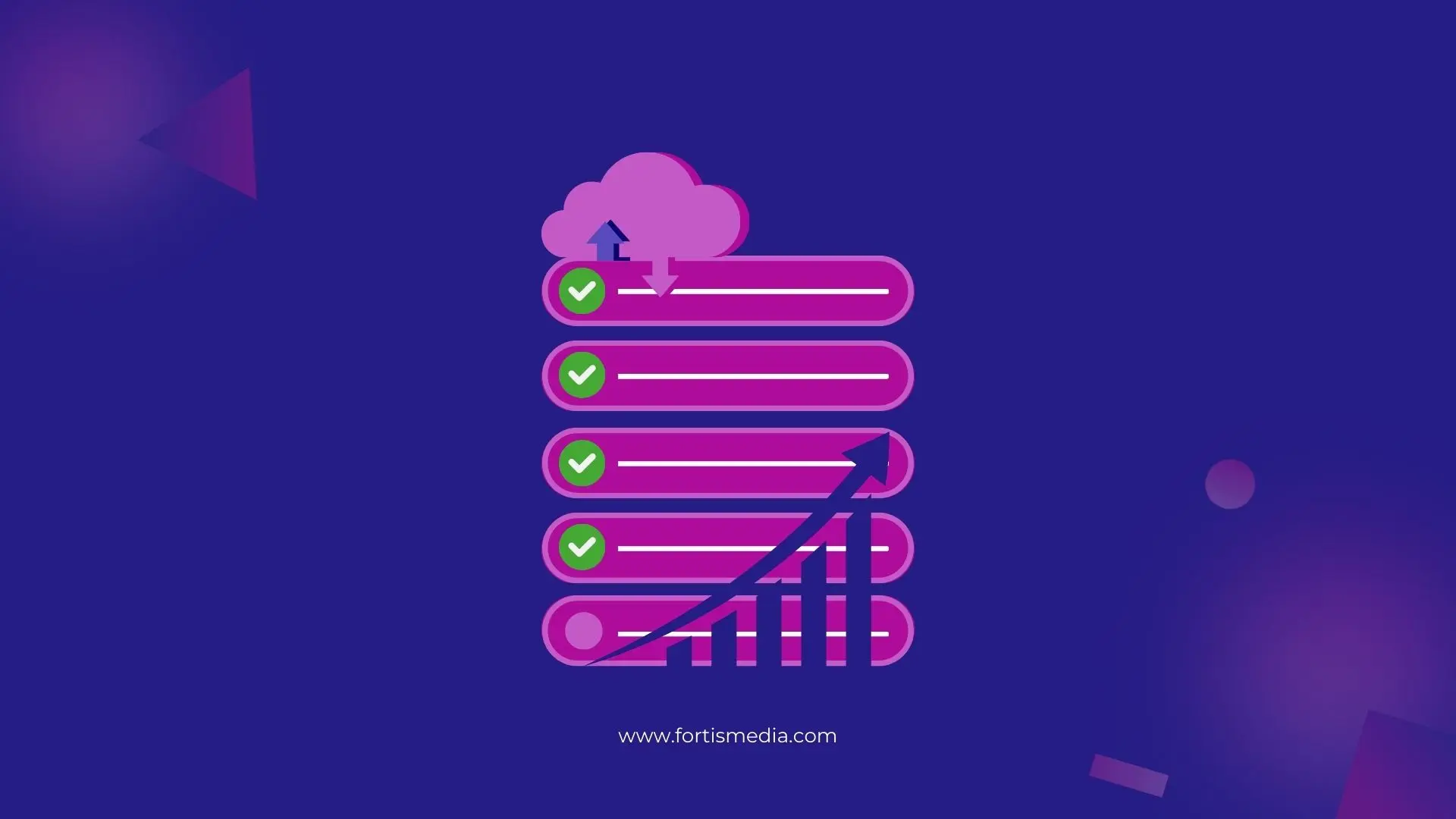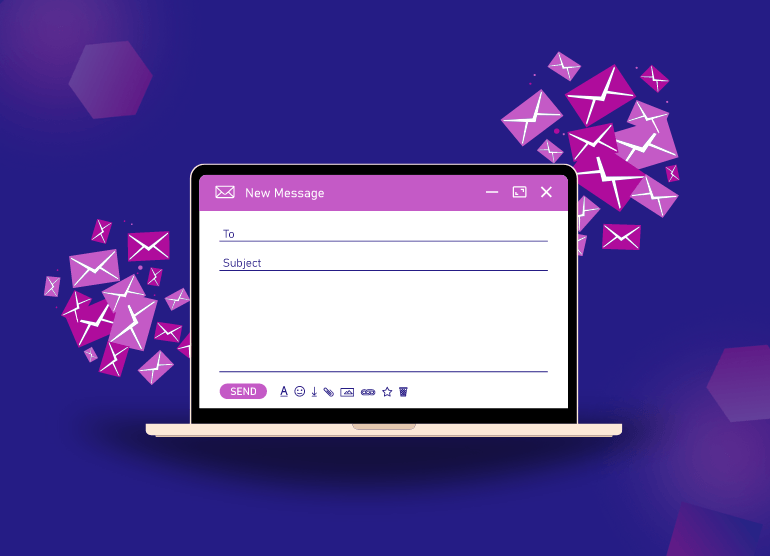SaaS Content Marketing 101: A Comprehensive 10-Step Guide for Business Growth

Book Your SEO Audit Today
Book a demoWhat Is SaaS Content Marketing, and How Does It Work?
SaaS content marketing crafts and distributes valuable content to reach and engage potential customers for SaaS (Software-as-a-Service) products.
However, a content strategy should not be predicated on just selling products. It should be centered on your customers’ pain points, especially if you’re pushing for a customer-centric strategy.
Knowing your target audience is the prerequisite to SaaS content creation. From using content marketing tools to analyzing trends in online communities, creating content for SaaS businesses reflects how well you understand your target customers.
Why is the SaaS content strategy different?
A SaaS content strategy is different from other content marketing setups. While sharing the same goal of reaching and engaging audiences, distinctive features set SaaS content marketing apart from other content formats.
SaaS companies should focus on these plan of action when strategizing their content:
- Focus on inbound marketing rather than outbound strategies;
- Address customer pain points through educational and helpful blog posts;
- Demonstrate industry expertise via case studies, whitepapers, surveys, and data-driven reports.
Going through a single route of hard-selling your products will not cut it in this strategy. If you center your messaging around brand promotions, your audience might view your content as one of the usual digital advertisements they see on their devices.
Producing content for a SaaS brand should prioritize the interests and needs of the customer base, and then the “selling” aspect of the business will flow naturally.
10 Steps to Create a Winning SaaS Content Marketing Strategy
Engage audiences and drive sustainable growth with these ten key steps of creating valuable content for your SaaS business.
1. Define clear goals and align them with business KPIs
Do you want to grow your web traffic from 10,000 visitors per month to 250,000 users monthly? This result will not happen overnight, so you might as well lay out your goals first.
The good news is that you don’t have to pick your content goals from scratch.
The easier way is to align your content with the more urgent Key Performance Indicators (KPIs) of your SaaS company, such as the ones below:
- Lead generation and conversion
- Website Traffic
- Churn and retention
- Content engagement and reach
- Cost per lead and acquisition
For example, analyzing your keyword rankings and click-through rate could be the more specific goals if your long-term goal is to grow your organic traffic.
This way, you’re measuring your progress through specific, attainable objectives. The small steps in the ladder will eventually take you to the top rung.

2. Get to know your target audience – and take your time
You guessed it right: your audience is the most important element of creating content for SaaS companies. Understanding their pain points is crucial, especially in a SaaS market where your products are used to address very specific needs.
You have to be very patient with the process, though. Customer interests evolve, and you can see changes in weeks or months. To adapt to these changes, you can follow these guidelines:
- Define the characteristics of your Ideal Customer Profile (ICP)
- Gather demographic data through customer research
- Segment your target audience into buyer personas
- Use keyword research tools for Search Engine Optimization (SEO)
- Monitor online platforms and communities regularly
It might look like painstaking work, but some tools can make your life easier. Automation tools such as Google Analytics, Hootsuite, and Sprout Social could help you create a clearly defined audience.

3. Leverage your A-SEO team for keyword research
After setting measurable goals and determining your potential customers, the next step is to discover the words and phrases currently trending in your market.
This process is called keyword research, a method of identifying the terms people use when searching for information related to your SaaS product.
While this strategy is initially designed for organic search engine traffic, discovering seed and long-tail keywords can help you market more effectively on other platforms.
You can incorporate relevant keywords in your SaaS content marketing efforts on these platforms:
- SEO
- Email promotions
- Pay-Per-Click (PPC) advertising
- Social media marketing
- Video content marketing
Keyword research is such a crucial aspect of B2B SaaS content marketing that many successful businesses outsource this strategy to experts. You can optimize your keywords and content strategy with digital marketing agencies like Fortis Media and other well-known SaaS content marketers in your area.

4. Consistency is key – so have a well-structured content calendar
Becoming a reliable source of information is the secret to content creation for SaaS companies. Quality content will be at the forefront of your distribution strategy, but consistency is another crucial element.
When people regularly encounter your blog posts and other content forms, they perceive your SaaS business as an authoritative figure in the industry. This will help you build momentum, encourage engagements, and increase brand awareness for your SaaS product.
In any other content marketing scheme, you shouldn’t stop when you already have this momentum.
Don’t trust your ability to wing it every time, though. Take a look at these content calendar tools that could schedule your blog posts and social media content:
- Buffer
- ClickUp
- Hootsuite
- Sprout Social
- Notion
- Monday
- Trello
- Google Sheets
Along with using a project management tool, you can also utilize the built-in content scheduling tools of platforms like Facebook, Twitter, LinkedIn, Instagram, and YouTube. This calendar should only serve as a guide, as there are times when you need to adapt and change your content schedule.
5. Repurpose content by experimenting with different formats
When you create SaaS content, you can distribute it on multiple platforms. For instance, a long-form blog post can be broken down into smaller content formats. You can transform the blog post into an engaging infographic or even a short video.
If you want to begin creating content for different platforms, here are several formats that are currently trending in content marketing processes:
- Tutorials and how-to-guides
- Case studies and use cases
- Social media snippets
- Ebooks and whitepapers
- Infographics
- Reels and short video clips
- Email marketing snippets
- Podcasts
The sky’s the limit here, although one very crucial aspect is updating the facts in your content. You can make visually appealing and witty posts, but creating factual content is the key to establishing authority in the SaaS market.

6. Experiment with CRO to optimize for conversions
SaaS businesses create content to boost their visibility and engagement, but there’s no one-off strategy for this objective. High-quality content for a particular SaaS business may not be as effective when you use it for another SaaS company.
You could create content in different formats and variations to discover the best content for your target audience. You could dive into the Conversion Rate Optimization (CRO) process, a strategy where you test variations of your marketing strategies.
As related to content creation, SaaS companies can test different variations of these elements:
- Headlines
- Images and graphics
- Colors
- Call-to-Action (CTA) wording and placement
- Content length
- Audience targeting
For example, you can experiment with your landing pages’ User Experience (UX) to see which variation produces a lower bounce rate and longer session durations for your website visitors. Pay attention to even the smallest details, as they could be a major factor for your audience.

7. Don’t shy away from being visual – utilize visual content
Visual content is steadily becoming the most engaging type of quality content. According to Statista, 66% of their survey respondents say they engage the most with short-form videos.
Do you want to know their second-most preferred content? That will be images, which garnered 61% in the poll.
Along with the typical infographics, videos, and images, you can also leverage other unique forms of content. These visuals could boost the visibility of your SaaS product:
- Memes and GIFs
- Visuals of customers using your product
- Multimedia elements incorporated in a company blog post
- Interactive content (quizzes, polls, and surveys)
Just like other types of content, visual content also relies on relevance and consistency. Ensure that you’re keeping up with the trends and using a content schedule as a guide for regular posting.

8. Increase visibility by sharing across platforms
SaaS companies shouldn’t just rely on blog posts for content. There are different marketing channels (or content platforms) that could help you get qualified leads.
Sharing content across platforms comes with a certain requirement, though. You need to fit your content within the platform structure you’re using. Take a look at the different content forms that best suit each content channel:
- Facebook: event invitations and community discussions
- Twitter: real-time brand updates and short-form descriptions
- Instagram: photos, carousel, reels, and video stories
- LinkedIn: thought leadership articles and posts for professional networking
- TikTok: short-form vertical videos centered on trending challenges and pop culture
- YouTube: tutorials and long-form video forms
An excellent tip for distributing content across platforms is to repurpose it. For instance, if blog posts are raking up high organic traffic on search engines, you can repurpose them into short-form descriptions, infographics, and video content. Just make sure you also optimize the messaging and tone for the content type you’re using.

9. Build loyalty with targeted email marketing campaigns
A targeted email marketing campaign is another great content marketing strategy for SaaS companies. It is a powerful tool that could help you reach individual customers, decision-makers, and organization leaders.
You need to personalize your messaging to get qualified leads through an email push. You start segmenting your email list, tailoring each segment’s content based on preferences, demographics, and previous interactions.
Once you have segmented your audience, you can ramp up your marketing efforts. SaaS businesses use emails for these reasons:
- Provide product updates and event announcements
- Get feedback from existing customers
- Nurture and convert leads
- Encourage paying customers to renew their accounts
When you create quality content through an email platform, you can use analytics tools to measure campaign performance. These reports can give your marketing and sales team more information about your SaaS clients and their customer journey.

10. Assess success through analytics
Compared to traditional marketing, assessing success in digital marketing is easier. For instance, analytics tools can easily measure traffic when SaaS businesses publish content for organic search.
By measuring the success of your content, you’ll gain data-driven insights into these metrics:
- Lifetime Value (LTV) of customers
- ROI
- Cost-Per-Acquisition (CPA)
- Conversion rate
- Social shares
- Backlinks for SEO
- Email metrics
- Referral traffic
Paying attention to these metrics could help you discover what it takes to convert a potential customer to a paying one. This could streamline your sales funnel, leading to a more efficient distribution of your time and resources. Also, don’t forget to prioritize metrics directly aligned to your current business objectives.
Benefits of Good SaaS Content Marketing (Does It Pay Off?)
Do you want to increase brand awareness most efficiently? A good SaaS content marketing strategy will help you reach this goal.
Clear and measurable ROI
Having direct information on your ROI is one of the best ways to see how efficient your marketing campaigns are. You can do that in content marketing, as many analytics tools could track your campaign metrics.
Along with the in-built tracking tools found in social media platforms or your Content Management System (CMS), you can also use third-party analytics tools like Google Analytics, Mailchimp, Moz, BuzzSumo, and Google Search Console.
Tracking campaign metrics isn’t just for content optimization; it can also give insights into the different stages of your marketing funnel.
Established brand authority and trust
Did you know that 73% of B2B companies leverage content marketing? B2C businesses are not far off, as 70% of these brands also use content to promote their products and services.
This trend isn’t surprising, given how easy it is for people to access content online. It’s not just about getting your product seen — 62% of purchase decisions rely on practical content such as in-depth guides, case studies, and other visual content.
All these numbers tell us one thing: having helpful content is a proven way to build brand authority and eventually increase conversions. When you focus on content that matters, you’re gaining your customer base’s trust every day.
Engaged users who retain
When you approach content with a customer-centric mindset, you’re not just engaging with your audience. You’re also becoming a constant helpful presence for their everyday needs, whether through social media infographics, long-form blog posts, personalized emails, or even customer support chats.
As you create content that helps, you’re also boosting your chances of retaining your customers. Remember, it’s not just your product or service that will do the heavy lifting; your customer base also looks at every aspect of your brand.
Increase your customer retention rate through helpful content that’s backed by market data and customer feedback.

Key Elements to Make SaaS Content Marketing Successful
Whether you’re pushing for organic traffic on search engines or expanding your reach on social media, your content marketing strategy needs these elements to be successful:
- Create unique content types across each platform
- Build a strong community by engaging and re-engaging with your audience
- Position your SaaS business as a reliable source through thought leadership
- Analyze the search intent of your niche audience
- Monitor what your competitors are doing (and not doing)
Content marketing hinges on a well-thought-out strategy adaptable to your niche’s evolving trends. Observe, analyze, and adapt — these three actions will be crucial for your campaign.
Challenges (and Solutions) in SaaS Content Marketing
Content marketing in the SaaS space has its own set of challenges, namely the ones below:
- High competition
- Evolving pain points in the market
- Long sales cycles
- Personalizing content across platforms
As we said before, SaaS’s sales and marketing funnel is a long journey. The key is to constantly monitor the market and gather as much customer data and patterns as possible. This will give you seasonal data and trends, which you could carry over for your next year’s content plans.
Content marketing will take up a lot of your time and effort, which is why many SaaS companies outsource this aspect of their business. For instance, digital marketing agencies like Fortis Media can cover all of your content marketing needs, so you can focus on other matters like product development and daily operations.

How to Measure SaaS Content Marketing Success?
To make sure that your content marketing efforts are not put to waste, you must regularly track and assess SaaS metrics. Take a look at some of the metrics that you could prioritize:
Audience growth: Track how many followers you gain and retain to check if your social media content marketing campaign is expanding your community.
Session duration: Evaluate the average time users spend on your website, as this gives you insight into the specific pages that interest your audience.
Customer acquisition cost: Calculate how much resources you spend in converting one customer, as this says a lot about the effectiveness of your leads and content.
One important thing to remember here: optimizing your content marketing campaign is as important as monitoring your performance metrics. Act right away, and don’t lose out on those potential conversions.
Best tools for tracking and analytics
There’s no do-it-all analytics tool to measure the whole performance of a content marketing strategy. Some tools fit the specific metrics you need to assess, as you can see below:
- Google Analytics: used to track web traffic and user behavior
- Sprout Social: used to monitor social media metrics like reach, engagement, and impressions
- SimilarWeb: used to compare your website performance to the industry benchmark
- BuzzSumo: used to discover the type of content that resonates with your customers
The key here is to determine the metrics that align with your business goals and then choose the best SaaS tool to provide you with these data. You could sign up for free trials or demos of these tools, so as to determine which solution best fits your needs.
Iterative improvement strategies
As you might have known by now, your SaaS content marketing strategy is a cycle of refining and optimizing your output.
Your competitors might be doing something new, or there might be an upcoming technological advancement in your niche. These situations require you to fine-tune your content throughout the year.
An iterative (or constant) improvement of your SaaS content marketing strategy is essential to maximize your reach and maintain your position at the top of search results.
The combination of consistency, relevance, factualness, and creativity in content creation will surely attract the regular attention of your audience.
Content Marketing for SaaS: Key Takeaways
Positioning your content in an educational and solution-based stance will get you ahead of the curve. Nothing attracts people’s attention better than content that could solve their problems. Your content is a gateway to build trust and preference for your SaaS product.
If you’re unsure where to start, you could consult digital marketing agencies like Fortis Media and many others. Just remember to do a thorough screening, as you’ll be starting a long-term collaboration with them.
FAQS About SaaS Content Marketing
-
What is SaaS marketing?
SaaS marketing promotes a Software-as-a-Service (SaaS) product to a target audience.
It involves various promotional activities, including determining a niche customer base, generating leads, creating helpful content, strategizing for paid advertising campaigns, and prioritizing customer success.
-
What is the difference between B2B SaaS and SaaS?
Software-as-a-Service (SaaS) is a broader term that refers to a business model where customers purchase a product through a one-time payment or a subscription basis.
Business-to-Business (B2B) SaaS is a form of SaaS distribution model that targets other businesses or companies as primary customers for their products.
-
How do you create a SaaS marketing strategy?
To effectively market your SaaS product, determine your niche audience first. By knowing their demographics and understanding their intent, you can develop written and visual content that could help solve their pain points.
Remember to optimize your marketing strategy, as the SaaS industry constantly evolves.








